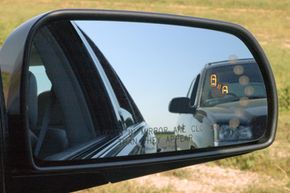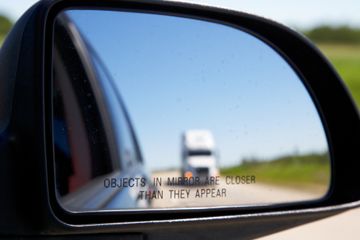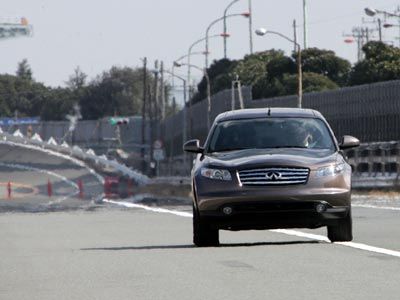Let's face it: This has been bothering you since you got your very first driver's license. While you're tooling down the highway at 55 miles per hour (88.5 kilometers per hour), you'd like to think that you know about everything in the vicinity of your car, especially other cars that could turn your own vehicle into a mass of tangled metal if you collide with it. And typically, if you aren't driving through thick fog or rain, you do. You know the position of the car in front of you because you can see it through the front windshield. You know what's behind you because you can see it in the rear view mirror. But it doesn't take many hours of highway driving to realize that there's this mysterious twilight zone off to both sides near the rear of your car that's big enough to swallow up an entire automobile and make it completely invisible, at least for a few seconds, in all of your windows and rear-view mirrors. This twilight zone is called -- the blind spot.
The blind spot is one of the most significant flaws in automotive design. According to the National Highway Traffic Safety Administration, there are more than 800,000 blind-spot-related accidents every year and about 300 of them result in fatalities. You can't avoid what you can't see, and the blind spot keeps you from seeing things that you desperately need to avoid. If you make a lane change while there's a car lurking invisibly just off your rear bumper, you'll probably be able to catch the error in time to prevent it. But you might also hit the other car or force it off the road (because the driver of that other car can see you, and will wildly attempt to avoid you), and at worst you could trigger a multiple pile-up of cars urgently trying to get themselves out of the way of your boneheaded maneuver.
Advertisement
But there must be something that can be done to prevent blind-spot accidents, right? In fact, there are several things that can be done, and over the last few years major car companies have come up with several ways of letting you know when it's safe to change lanes, alerting you to the presence of cars in your blind spot. Some of these ways are high-tech and rely on the latest in radar and camera detection technology. Others are low tech and rely on something as simple as an improved rear-view mirror.


